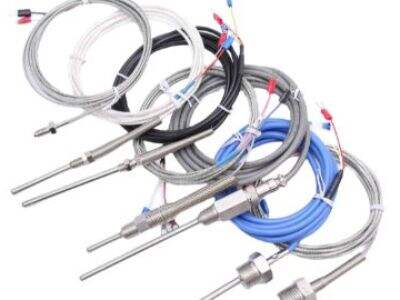Thermocouples are devices that are used to measure temperature. They are very significant in various places where it is vital to know the temperature. Thermocouples, like K Type and J Type, are of different types. There are different types and every one is good for different jobs since they have unique features. Understanding these differences can help us pick the right one for our needs.
Table of Temperature Ranges and Accuracies for K Type and J Type Thermocouples
Column for 1000-1500 characters: K Type thermocouples have great ability to sense temperatures high and low. They measure temp, as low as -200 degree Celsius to about 1350 degree Celsius. This allows them to be used in extremely high- or low-temperature applications. While J Type thermocouples are used from -210 degrees Celsius to 1200 degrees Celsius. Although K Type thermocouples provide better measurement accuracy for temperature than J Type thermocouples. So if you need to measure very precisely the temperature, the best option is the K Type thermocouples and not the J Type ones.
Different Jobs Where K Type and J Type Thermocouples Are Used
K Type thermocouples are widely utilized in several industries such as automotive manufacturing, aerospace engineering, and industrial production. They're particularly well suited for work on very high-temperature jobs and can withstand harsh conditions without chipping. Hence, they are so popular in these sectors. In contrast, J Type thermocouples are typically seen in the food industry, heating and cooling systems, and Labs. They are ideal for measuring lower temperatures, which makes them extremely helpful in these applications. J Type thermocouples also provide correct readings, which is critical with regards to food safety or lab experiments.
K Type vs J Type Thermocouples: Which One Should You Use?
There are also a needle choose between k type thermocouple probe and J Type thermocouples to consider. You should first have a think about the temperature range that you require for your work. Some applications involves higher temperatures and some are low temperature applications. Next, consider how accurate you need the temperature to be. Thermocouples you may find much more convenient than these, like a k type thermocouple sensor, but very precise measurements will be achieved with K Type and will provide much better accuracy. Finally, keep in mind the environment that the thermocouple is going to be in. If it’s going to be in a rough environment, you want to ensure that you choose one that will perform well under those conditions. Considering type of thermocouple to use is key to obtaining good temperature measurements and proper tool function, so take your time with this selection process.
K Type and J Type Thermocouples How To Get Them to Work
Here are some things that you need to do in order to get the best performance out of high temp k type thermocouple and J Type thermocouples. First of all, the proper installation of thermocouples is very crucial. If they’re not installed correctly, they may not provide accurate readings. Next, regularly check and calibrate them. That means recalibrating them so they’re measuring right. Finally, do not forget about the thermocouples, don't damage them. So make sure you have accurate readings from time to time by going through these steps.
In summary, the k type thermocouple and J type of Thermocouples is quite a handy tool to measure temperatures in many jobs. You can utilize this knowledge of the two different types, as well as tips on deciding between them based on temperature range and the job you must accomplish, to select the right thermocouple for you. Making sure your thermocouples are operating properly helps you get accurate readings and repeatable performance. At Lanchuang, an expert in high-quality thermocouples, you can learn what thermocouple to select for your own special application. Learning how to properly utilize these tools can provide you with a much higher outcome.



